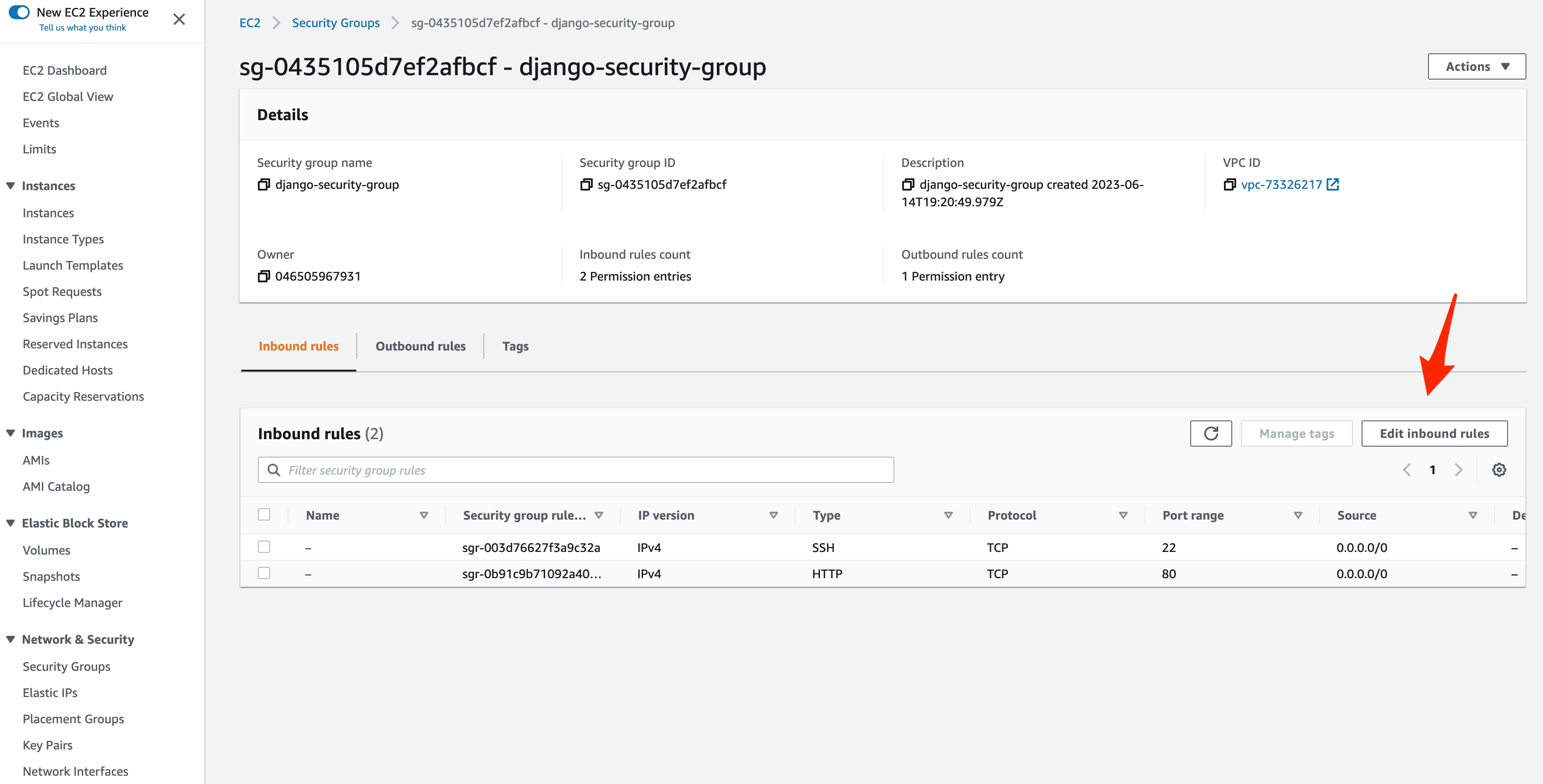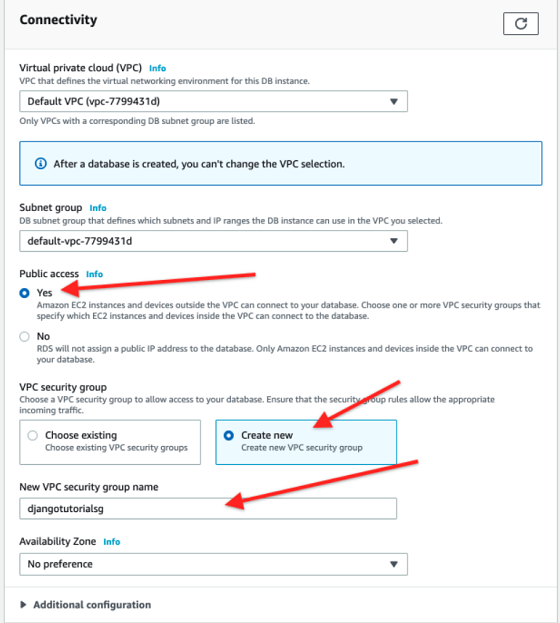

- AWS POSTGRESQL APACHE DJANGO INSTALL
- AWS POSTGRESQL APACHE DJANGO UPDATE
- AWS POSTGRESQL APACHE DJANGO CODE
- AWS POSTGRESQL APACHE DJANGO DOWNLOAD
We have configured the PostgreSQL however we need to enable traffic to listen to the Postgres 5432. DATABASES = Adding all traffic to Postgres listen_address Now in the settings.py add the following and configure accordingly, you can either leave the SQLite3 configuration with IF.ELSE condition with Postgres or comment that out. In order to configure the database, we need a python psycopg package. Exit out of PostgreSQL console and terminal. Check database name and database user psql dbNameĩ. grant all privileges on database dbName to dbUser Ĩ. Granting database permission to our new user.

Create a database create database dbName ħ. Create a user createuser -interactive -pwpromptĥ. On the Linux terminal sudo -i -u postgresĢ. To exit out Postgres command terminal exit Creating a new user and databaseġ. After installation, we can connect to the Postgres DB command terminal with: sudo -i -u postgresĥ.
AWS POSTGRESQL APACHE DJANGO INSTALL
sudo apt install postgresql postgresql-contribĢ. Installing the Postgres in the same instance where we have our application. Step 1: Since we are going into the deployment environment, we would like to use the PostgreSQL database to connect to our Django app. To resolve this, go to and confirm with the account you have set SMTP in settings.py. If you run into an SMTP issue while logging or signing in, it’s probably because of the Google Captcha preventing access to the account.

Run the following command, this will accept any IP address and run the app on port 8000.

If the port is already in use, we need to kill the 8000/TCP process. Now migrate the application with a command: python3 manage.py migrate -run-syncdbįinally, you can run the Django app using the server IP. If any error occurs, remove dbsqlite3, migration files, and _pycache_ from every application. In the settings.py, add the server IP to the allowed host. Since our application is running in a VPS machine, we need to verify if everything runs as perfectly as our local machine. To add available packages to the requirements.txt pip freeze > requirements.txt Testing Django App with Sqlite3 in Server
AWS POSTGRESQL APACHE DJANGO DOWNLOAD
Now, download the packages using the following commands inside the virtual env. If you already have requirements.txt that’s fine but we will need additional packages for the deployment, refer to GitHub Gist to get the required packages. Step 1: Now to get started you need to set up a virtual env in your project.Ĭreate a virtual environment inside the project directory using virtualenv env Step 3: At this point, we suppose you already have a repository of your Django app in the GitHub Step 2: Click on your profile and go to settings, there copy and paste the public id_rsa to the GitHub SSH and GPG keys. Step 1: Add id-rsa.pub of the VPS to GitHub to manage the repository. Pip3 -version Install awsebcli with pip export PATH=$PATH:~/.local/bin/Įb -version Configure GitHub SSH with VPS Python3 -version Install pip sudo apt install python3-pip Sudo add-apt-repository ppa:deadsnakes/ppa Sudo apt install software-properties-common We need to have an environment where we deploy our application, thus install python, pip, and awsebcli accordingly. Install required packages and dependencies Step 2: SSH to the instance chmod 400 test.pem Step 1: Launch an instance(ubuntu) with default configuration. Deploy Django eCommerce App to AWS Instance and SSH
AWS POSTGRESQL APACHE DJANGO CODE
This allows developers to submit thousands of lines of code and get deployed to the website within a couple of minutes sometimes some seconds.
AWS POSTGRESQL APACHE DJANGO UPDATE
To address this issue, developers built up CI/CD pipelines in which each code update is tested before being automatically deployed to production. However, if your program attracts users throughout the day, a new code modification might produce an issue, resulting in a 404 or 500 error for users. You modify the appropriate files and run eb deploy again if you need to make any changes. After you’ve set up AWS CLI and finished your application, execute eb init and then eb deploy to start it. If you’ve done this before or followed this instruction, you’ll know that it’s a rather simple process. Why is CI/CD important?Īssume you develop a Django web application on your local machine and then publish it to AWS Elastic Beanstalk. You can easily install and manage your application, which scales up and down as your site expands. It’s a managed service that combines the server (EC2), Autoscaling, Load Balancing, and static files into one package (S3). Installing SSL certificate to our Domain NameĮlastic Beanstalk is an Amazon AWS Platform As A Service (PaaS) that makes it easier to set up, deploy, and maintain your program.Create Elastic Beanstalk App and Environment.Adding all traffic to Postgres listen_address.Testing Django App with Sqlite3 in Server.Install required packages and dependencies.


 0 kommentar(er)
0 kommentar(er)
